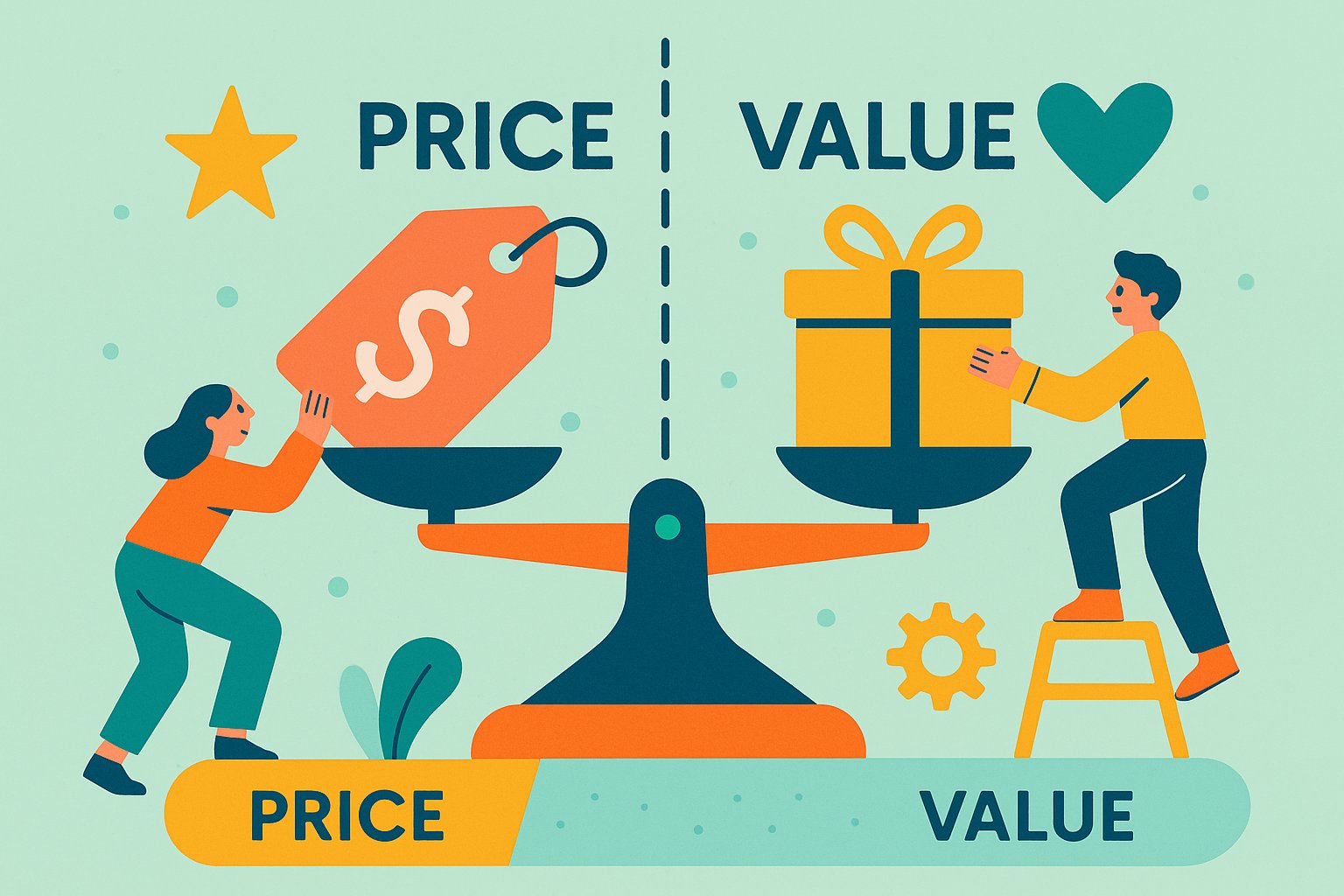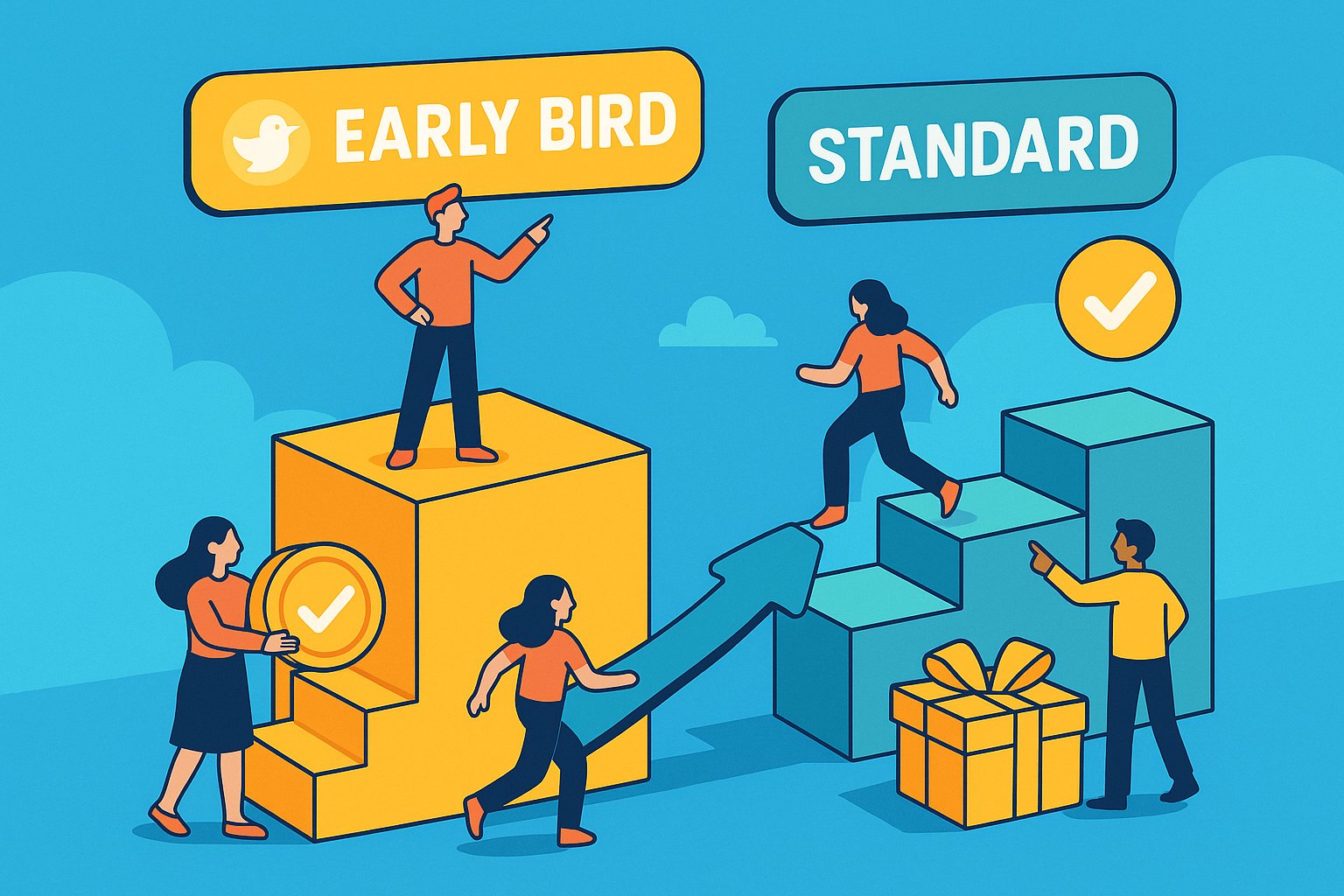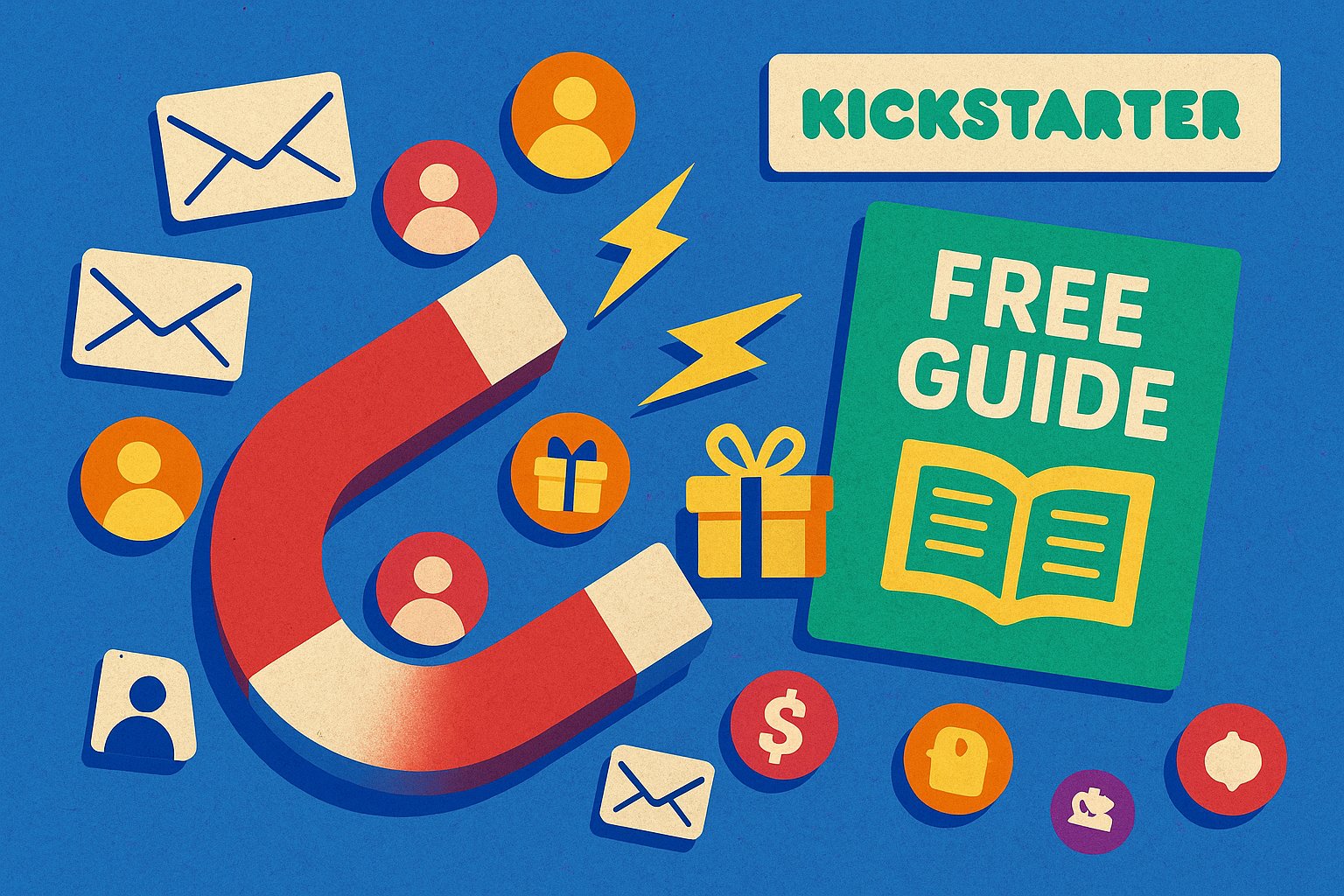The Art of Symbiotic Perk Pricing
Perk pricing sits at the crossroads of creativity and commerce. When you launch a crowdfunding campaign or develop a subscription model, each perk or reward tier represents not just an incentive to pledge but also a statement of your product’s worth. Underpricing these perks can alienate backers who equate low cost with low quality, while overpricing risks scaring away potential supporters before they get a chance to engage. The real challenge lies in striking a balance—crafting price points that reflect both tangible costs and intangible value propositions without diminishing the perceived prestige of your offering.
This opening section pulls back the curtain on why balanced perk pricing is more than a spreadsheet exercise. It’s about empathizing with your audience’s needs and expectations, understanding market standards, and marrying those insights with your brand’s unique story. When you undercut value, you not only jeopardize profitability but also risk devaluing the emotional connection that backers forge with your project. Conversely, overzealous margins might lead to a surge of initial interest followed by a swift drop-off as potential backers balk at what they view as unreasonably high costs. By embracing a thoughtful approach to pricing—one that considers production expenses, perceived value, market benchmarks, and psychological triggers—you protect both your bottom line and your brand reputation. In finding this equilibrium, you create a virtuous cycle: backers feel confident in their purchase, share their positive experiences, and inspire others to climb on board, ultimately fueling sustainable momentum and long-term loyalty.
Unpacking the True Cost: Beyond Unit Expenses
Before assigning a single dollar value to your perks, it’s essential to fully understand the comprehensive cost structure. Many creators focus narrowly on unit costs—materials, manufacturing, and packaging—without accounting for shipping complexities, platform or payment processing fees, and contingency buffers. If a handcrafted prototype costs $20 to produce and it ships for $8 domestically, you might be tempted to set a perk at $35 and call it a day. However, this calculation neglects Kickstarter or Indiegogo fees, which typically hover around five percent of the total pledge, as well as credit card processing charges that can subtract another three to four percent. For international fulfillment, costs can balloon even further once customs duties, taxes, and variable shipping rates come into play.
Factoring in these hidden expenses often reveals that a seemingly modest $35 perk might only net you around $25 after all deductions—barely enough to cover your base manufacturing cost and certainly insufficient to support ongoing development or marketing. To avoid undercutting value, begin with a detailed cost breakdown that lumps every expense into distinct categories: production, quality control testing, packaging materials, domestic shipping, international shipping, platform fees, payment processing fees, and an emergency fund for unexpected overruns. By embracing a holistic cost perspective, you safeguard yourself against surprise deficits and create room to build in profit margins that reinforce the premium positioning of your perks, ultimately preserving both quality and credibility in the eyes of your backers.
Gauging Market Standards: Understanding Competitor Benchmarks
Once you have a solid grasp of internal costs, it’s time to measure them against external market dynamics. Scouring competitor campaigns or similar product offerings provides invaluable context for what backers consider fair and compelling. If you’re launching a new tech gadget with incremental features, study comparable campaigns—both successful and unsuccessful—to see how their perk pricing influenced pledge volume. Did a $75 standard perk attract significantly more backers than a $60 launch-day special? If so, why? Perhaps competitors under-delivered on post-campaign updates, damaging trust, or maybe their perceived value wasn’t effectively communicated.
These comparative analyses also spotlight regional pricing variations. A niche art print might command $50 in the U.S., whereas European backers accustomed to value-added taxes could expect a slightly higher baseline. Acknowledging these subtleties equips you to tailor perk tiers that resonate across diverse demographics. If your research uncovers that similar projects regularly offer early-bird discounts of around 20 percent, you know the psychological anchor point you need to beat without degrading your own margins. By thoughtfully benchmarking against market standards, you calibrate your pricing strategy to align with both backer expectations and competitive realities, ensuring that your perks stand out for their value rather than their low cost.
Weaving Emotional Value: The Power of Story and Scarcity
Beyond hard cost calculations and market comparisons lies the realm of perceived value—where emotional triggers, narrative depth, and the angle of exclusivity work in tandem to justify premium pricing. When a backer pledges $100 for a limited-edition collector’s kit, they’re not just paying for physical components; they’re investing in an experience—early access, behind-the-scenes insights, or personalized recognition. Your product’s backstory, the founder’s passion, and the promise of being part of an exclusive community can significantly elevate what people are willing to pay. Create a sense of scarcity through small-batch runs or numbered editions, and backers suddenly perceive each unit as a rare artifact rather than just another gadget.
Furthermore, emotional value can be reinforced by tying perks to meaningful narratives: a portion of proceeds directed to a charitable cause, or a special perk unlocked only if the community reaches a specified milestone. These strategies transform perks from mere transactions into shared missions. Under this lens, a $150 premium tier feels more like an investment in a collective legacy than a simple purchase. When you harness storytelling and the psychology of scarcity, you imbue your pricing with resonance, allowing backers to feel that they’re gaining intangible benefits—status, purpose, and belonging—that outweigh the monetary cost, thus safeguarding your perceived value even if your price points sit above bare-bones competitors.
Mapping Price Tiers to Diverse Backer Personas
No single perk price will satisfy the entire spectrum of potential supporters. To maximize engagement without undermining value, construct a tiered system that aligns with diverse backer personas and their respective motivations. Start with an entry-level perk that offers a taste of your product at a price point affordable enough to encourage impulse pledges—perhaps 10 to 15 percent above cost. This tier should feel like an easy win, a low-risk entry into your ecosystem. Next, introduce a mid-tier that bundles in extra content—maybe a companion digital guide or an add-on accessory—priced at a 20 to 30 percent premium over the base perk. This appeals to backers seeking high perceived value without reaching into the highest price brackets.
For the most dedicated enthusiasts, a premium tier might include personalized customization, such as having their name inscribed on a limited-edition plaque or gaining direct input into the next phase of product development. Price this level at a significant premium—perhaps 2.5 to 3 times the base cost—reflecting the exclusivity and enhanced experience. Throughout this tiered hierarchy, maintain logical increments and clear distinctions: backers should instantly recognize why a $75 perk is so much more compelling than a $50 option. By tailoring price tiers to specific personas—early adopters, mid-range value seekers, and brand evangelists—you create a laddered approach that draws in a broad audience without eroding the prestige of your highest-value offerings.
Incorporating Early-Bird Incentives Without Cannibalizing Value
Early-bird discounts are potent tools to kickstart momentum, but they can backfire if not carefully balanced. Offering a 30 to 40 percent discount to the first 50 backers might flood your campaign with initial pledges, but if that same discounted price appears too good to be true, it risks creating buyer skepticism: “Why is this so cheap now and so expensive later?” To avoid undercutting your value, design early-bird perks that retain enough margin to cover costs while serving as aspirational incentives. A 15 to 20 percent discount usually strikes a sweet spot—rewarding swift action without devaluing the tier in the eyes of later backers.
Additionally, limit early-bird quantities strictly. When just 25 or 50 slots exist at the discounted rate, scarcity itself becomes a value proposition. Backers who miss out on that allocation will then face the regular tier pricing, often feeling satisfied that they acted “almost” in time rather than resentful they couldn’t secure a perpetually low price. Transparency remains crucial throughout: clearly communicate that early-bird slots are finite and outline the forthcoming standard pricing, so backers understand exactly how much extra they’ll pay later. By circumscribing early-bird incentives in both scope and depth, you capture initial dynamism without cheapening your base perks.
Monitoring Engagement and Adjusting in Real Time
Launching with a meticulously calculated perk structure is only half the equation—ongoing vigilance is equally important. As your campaign unfolds, closely track which tiers sell out rapidly and which sit idle. If a particular mid-tier perk stagnates despite solid traffic, dig deeper: are backers unclear about its value? Does the price seem incongruent with what competitors offer? Consider enhancing the tier by adding a small, cost-effective bonus—such as an exclusive digital wallpaper or an extra month of post-launch support—and watching if that revitalizes interest.
Conversely, if a top-tier premium perk sells out within hours, you may have underpriced it. In such cases, consider introducing a new, elevated tier or adding a limited number of “second-chance” slots at a slightly higher price, making sure to communicate transparently that these slots exist without devaluing the original premium claim. Real-time analytics—pledge velocity, average pledge size, and conversion rate by tier—provide the empirical foundation needed to make these nimble adjustments. By treating pricing as an ongoing dialogue with your backers rather than a static decree, you sustain momentum and reinforce the notion that your offerings remain in tune with community perception.
Communicating Value Clearly to Avoid Pricing Confusion
Even the most carefully balanced pricing structures can unravel if backers find them confusing. To prevent this, employ concise, persuasive copy and intuitive visuals that clarify exactly what each perk entails. Avoid jargon or vague terms like “exclusive access” without further elaboration. Instead, label tiers explicitly—“Standard Edition,” “Deluxe Bundle,” “Collector’s Limited”—and provide quick, one-sentence summaries that let backers immediately grasp what they receive at each level. If shipping costs vary by region, include transparent breakdowns or add-on calculators that let international supporters know their true total at checkout.
Visual aids like simple comparison tables—featuring tier names, prices, and bullet-point highlights of included assets—help backers see the incremental value leapfrogging from one level to the next. When communicating the rationale behind pricing, be candid: “Each Deluxe Bundle includes a handcrafted wooden display case ($10 production cost) plus hand-numbered documentation, reflecting a limited run of only 100 units.” Such transparency builds trust and demonstrates that your pricing structure is rooted in tangible cost and value considerations, rather than arbitrary markup. Clear communication empowers backers to make confident, informed decisions, thereby reducing cart abandonment and fostering loyalty.
Sustaining Value Beyond the Campaign
Balancing perk pricing isn’t solely about launching a successful campaign; it’s also about nurturing lasting relationships that extend long after funding closes. As you fulfill and ship rewards, continue delivering on the promises that underpinned your pricing. Provide regular updates on shipping milestones, share unboxing photos from early backers, and spotlight user-generated content that celebrates the unique value of your product. Post-campaign, consider limited post-sale runs for specific high-tier perks—such as a special anniversary edition—carefully priced to reflect production costs and community demand without undercutting your original backers.
Request feedback and testimonials that reinforce the premium nature of your offering: if supporters consistently praise the build quality, attention to detail, or the emotional resonance of a personalized thank-you note, leverage those endorsements in future endeavors. By preserving the perceived value of your perks through transparent delivery and authentic communication, you ensure that your brand retains credibility. This continuity of perceived value will serve you well when launching subsequent campaigns or transitioning your product to retail. A balanced pricing strategy that honors both costs and backer expectations blossoms into a reputation for reliability and quality—one that backers return to again and again.
Conclusion: Crafting Perk Pricing as a Sustainable Strategy
Balancing perk pricing without undercutting your value is a multifaceted endeavor. It demands rigorous cost analysis, savvy market benchmarking, psychological insight into backer motivations, and agile real-time adjustments. By constructing tiered offerings that align with diverse backer personas—entry-level supporters, mid-range enthusiasts, and premium collectors—you paint a spectrum of value that feels both attainable and aspirational. Layer in early-bird incentives judiciously to spark initial momentum, and maintain transparent communication to forestall confusion or skepticism. Post-campaign, continue demonstrating the worth of each perk by delivering on promises and fostering community advocacy.
In mastering the delicate dance of perk pricing, you don’t just secure a successful crowdfunding campaign; you also cultivate a loyal, engaged audience that champions your brand long after the final reward is shipped. This sustained credibility paves the way for future projects, retail launches, and long-term market presence—proof that balanced pricing is not merely a short-term tactic, but a sustainable strategy for lasting success.




